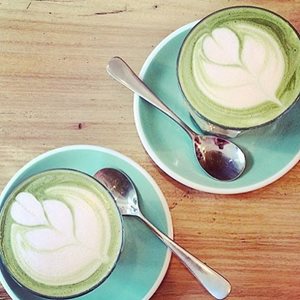If you have been on Instagram lately or if you read any article on health or culinary trends you are sure to have heard about matcha green tea. Now is the time to understand what it is, why it’s become so popular and how you can incorporate it into your foodservice menu.
What is matcha?
Matcha is known as the Champagne of green tea where the best leaves are stone-ground into a fine powder which dissolves in water to form a vibrant, naturally sweet green tea. Consuming the whole tea leaf delivers incredibly high antioxidant levels.
Who’s buying it?
There are two main customers consuming matcha in Australia. The first is the health conscious person who drinks matcha for its high antioxidant content, energy, weight loss and health properties. These customers would like to see matcha in healthy food and beverage items — think sugar-free, protein smoothies, or vegetable juicing. Five Plus Smoothie in Melbourne’s CBD is just one example of a business catering to this market with its Muscle Matcha Smoothie (spinach, matcha, tofu, dates, almond milk) — a drink very popular among the local office workers.
The other matcha market is those who love culinary creations and the distinct taste of matcha. They want to see vibrant green macarons, ice cream creations and decadent desserts. The growth of this market started with consumers who have experienced very mature matcha markets in Japan and China and have jumped upon any establishments bringing this trend to Australia. The taste for matcha has since become more mainstream with hundreds of cafes, restaurants, bakeries and ice creameries featuring green tea creations. An example is The Bake Co in Brisbane which has a Matcha Kit Kat Cup-cakes as one of its top sellers.
Where should your business start?
First of all, work our whether your customers would drink matcha for health or as a decadent creation. This will determine how you’ll incorporate it into your menu. It’s important to also buy high quality matcha so that it maintains its full nutritional profile or taste/colour when you use it.
The four indicators of matcha quality are:
- Country of origin: Japan is the home of matcha — they are the only country using the proper production methods and they produce the highest quality product
- Colour: Matcha should be a vibrant green indicating it’s high nutritional profile
- Taste: Matcha should have a subtle and natural sweetness — poor quality matcha is often bitter
- Price: Matcha is the rarest green tea accounting for just .02 percent of tea production in Japan — if you find matcha that is very cheap then it is likely poor quality and not from Japan.
The most popular way to use matcha includes:
Article contributed by Erin Young who is the founder of Zen Green Matcha Tea, a premium matcha green tea powder brand in Australia. To find our more information or to buy wholesale bulk matcha you can visit her website Zen Green Matcha Tea.

